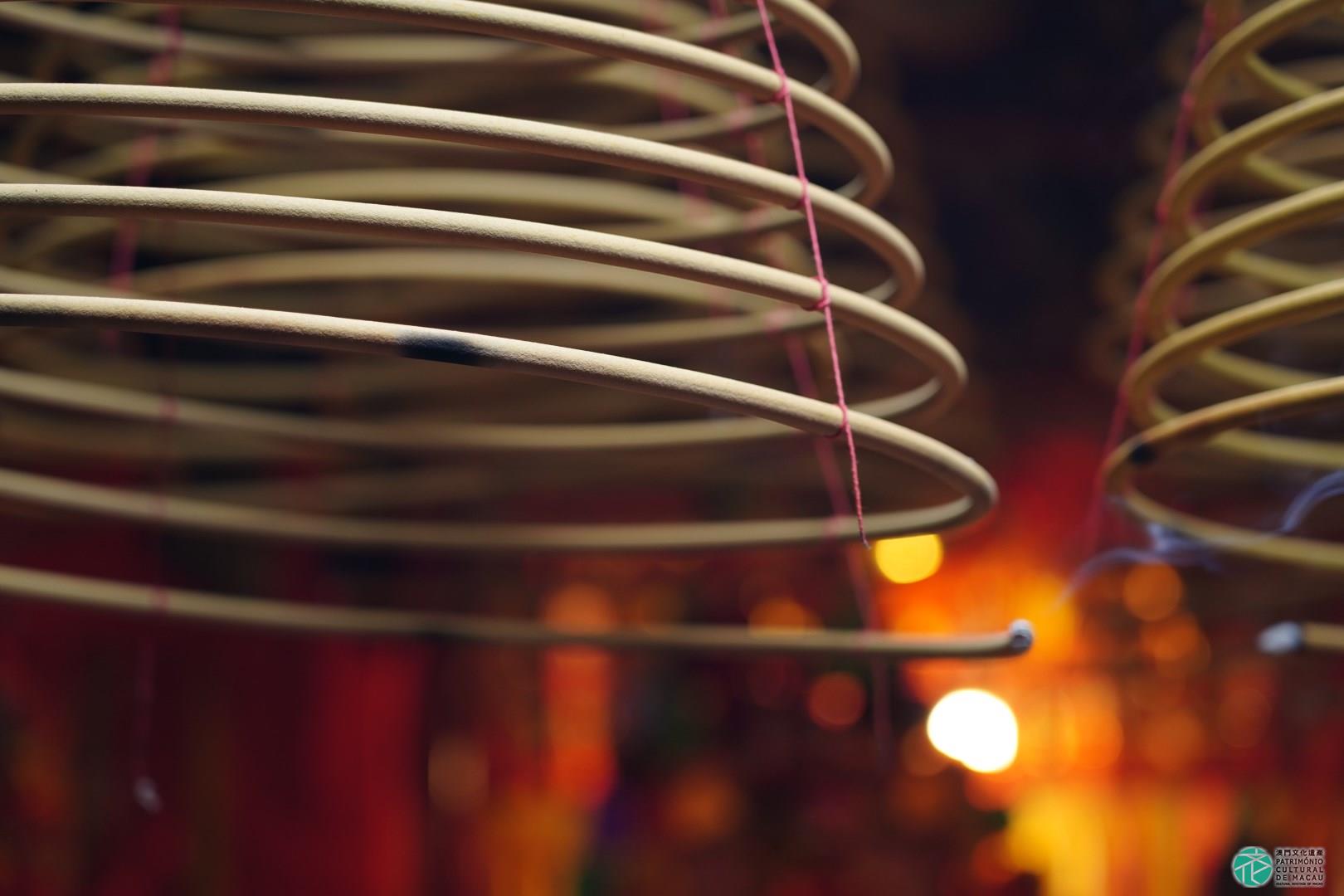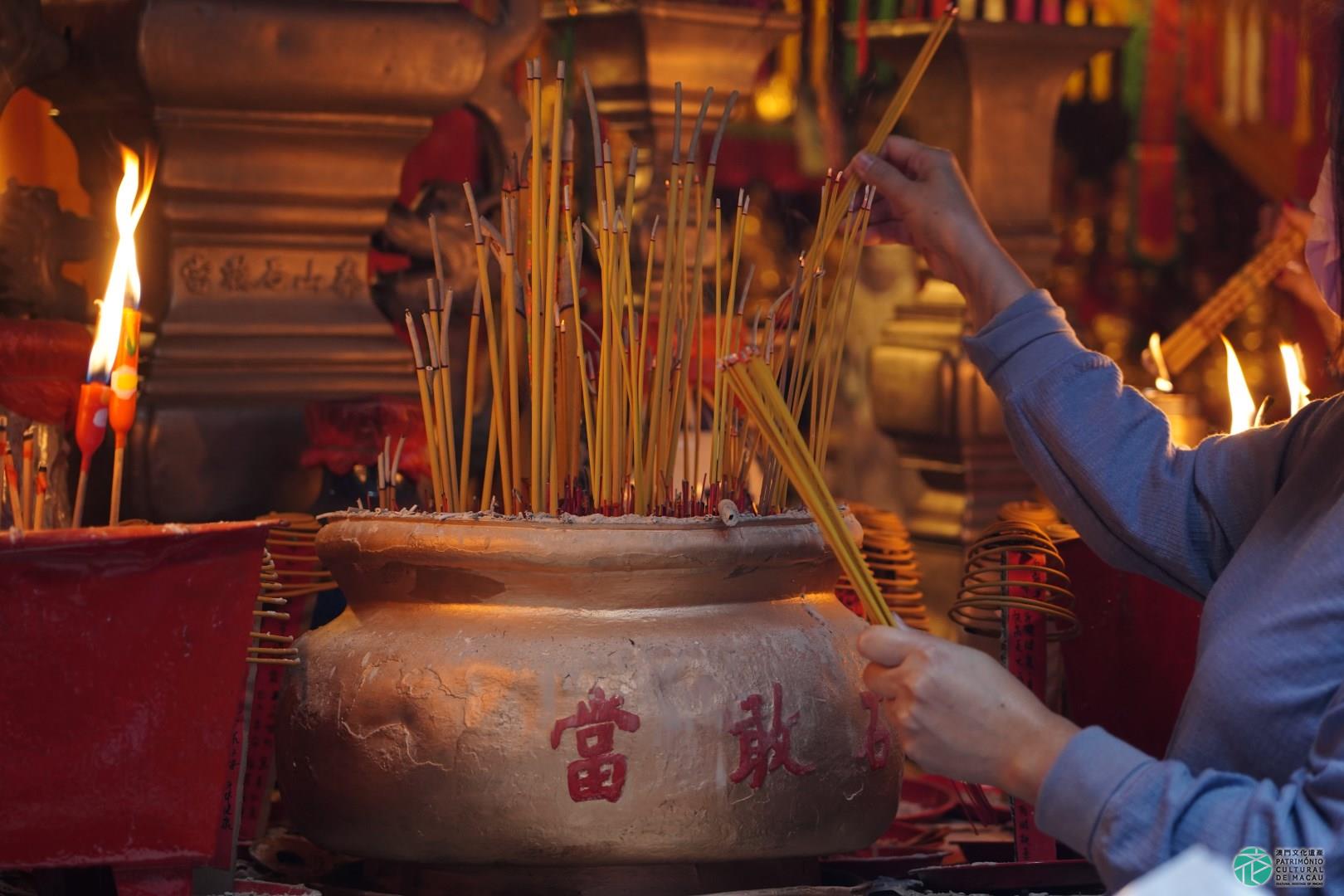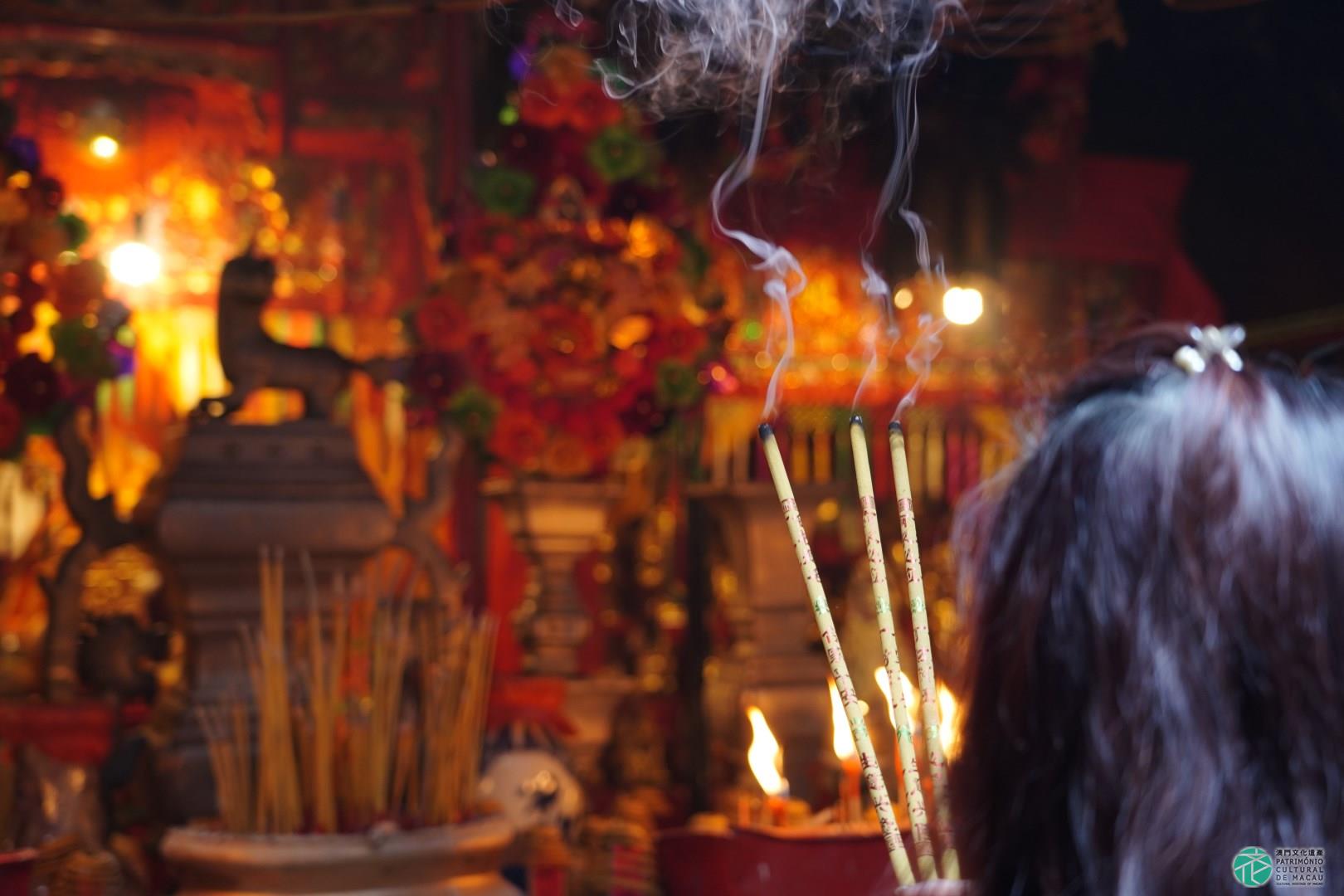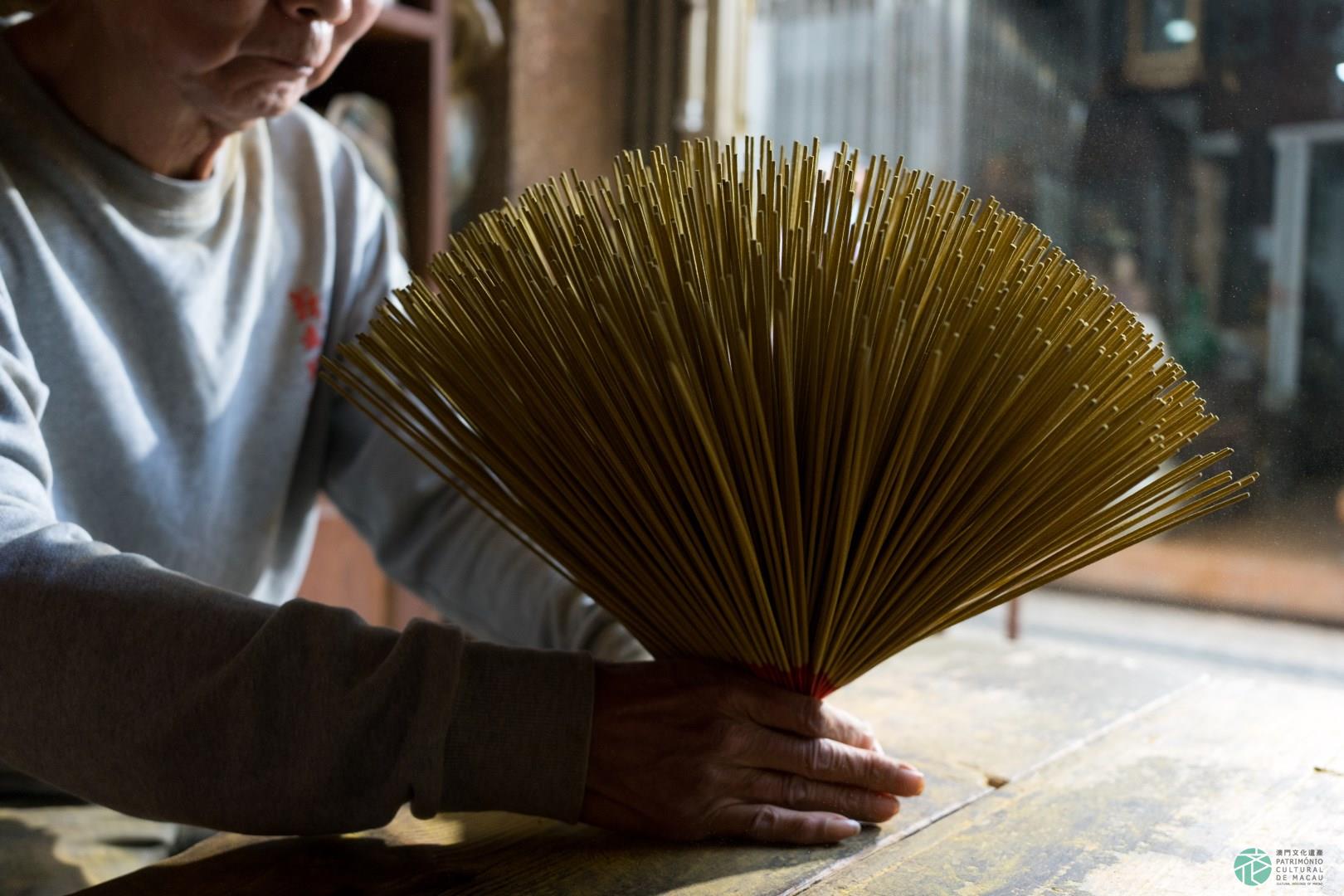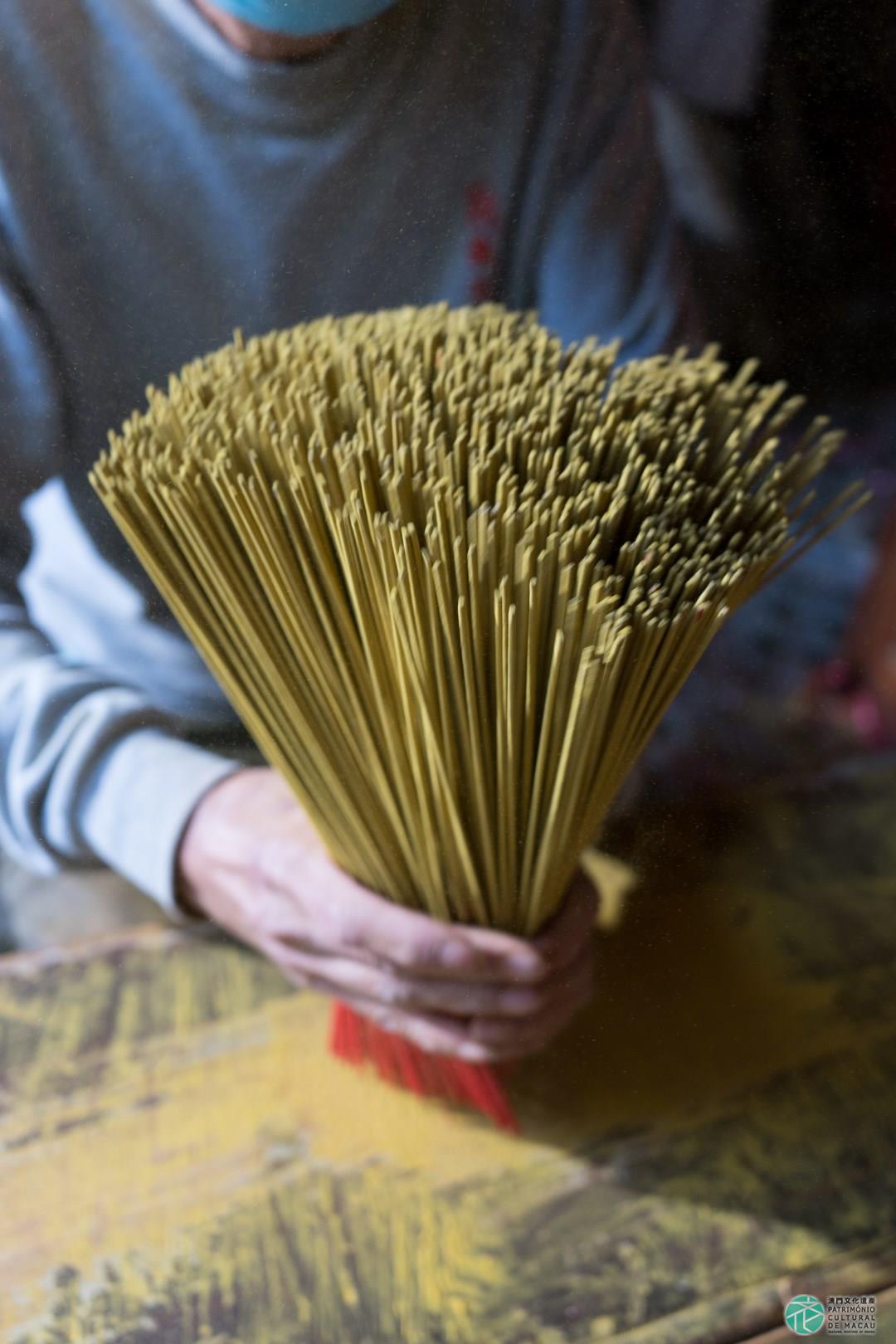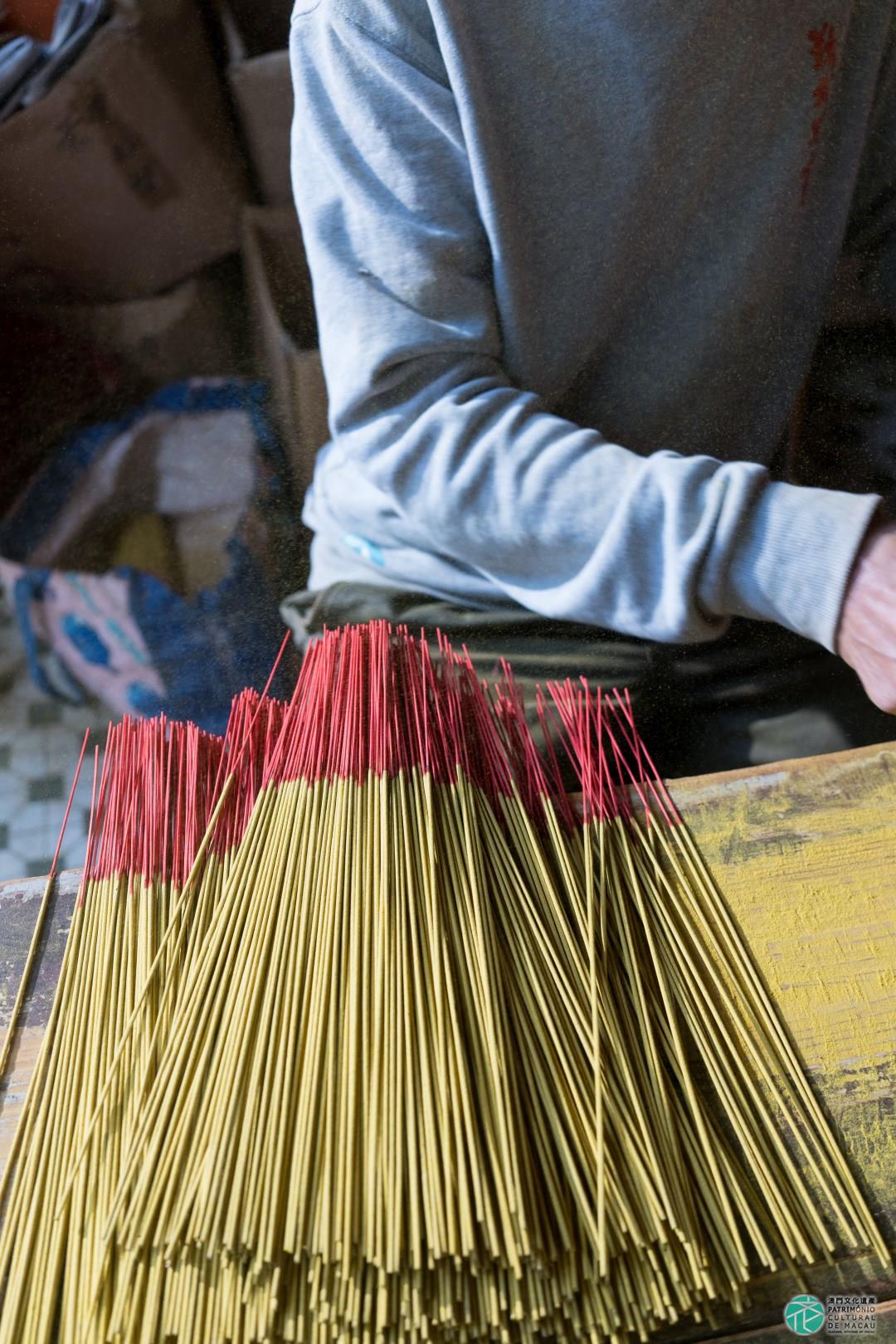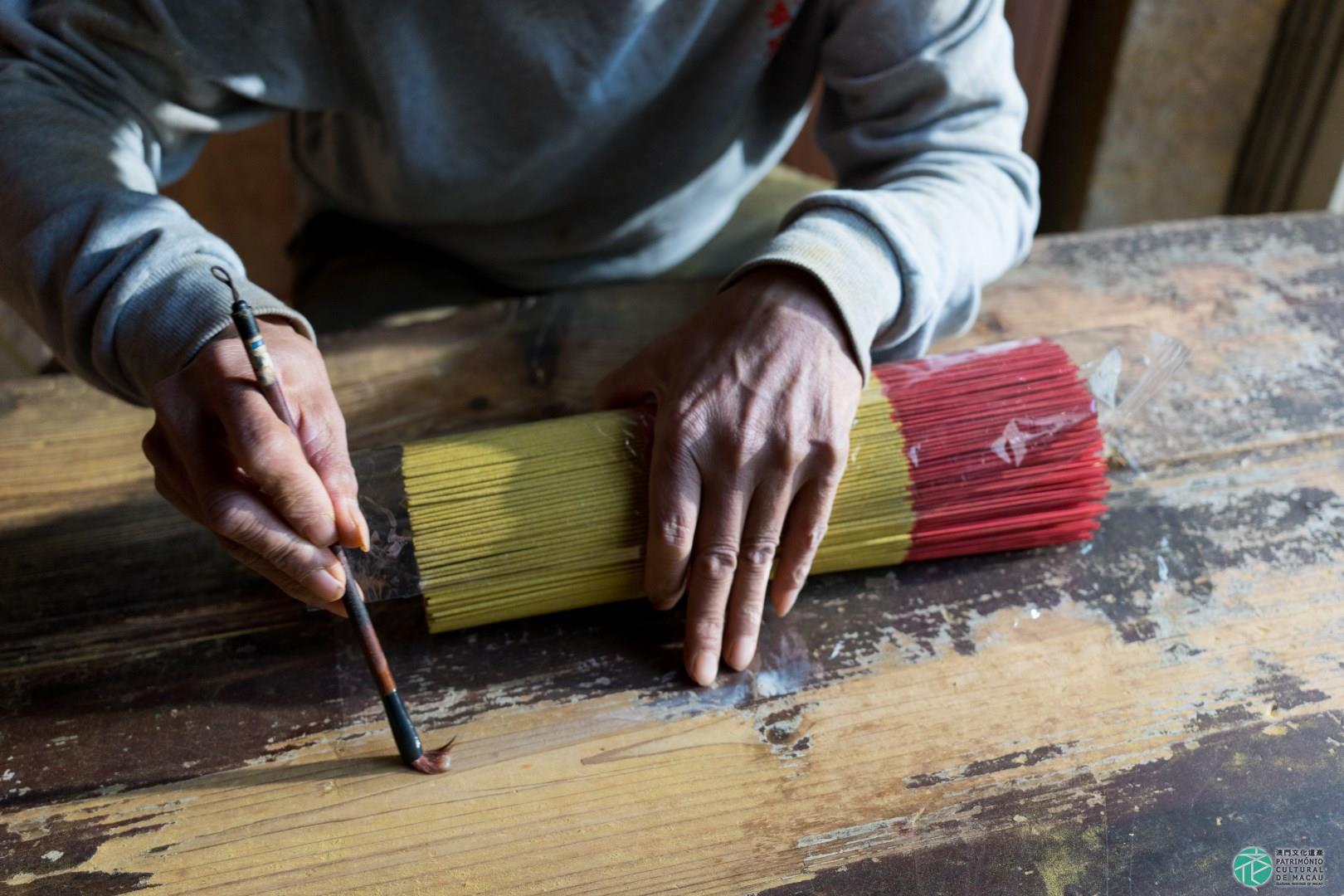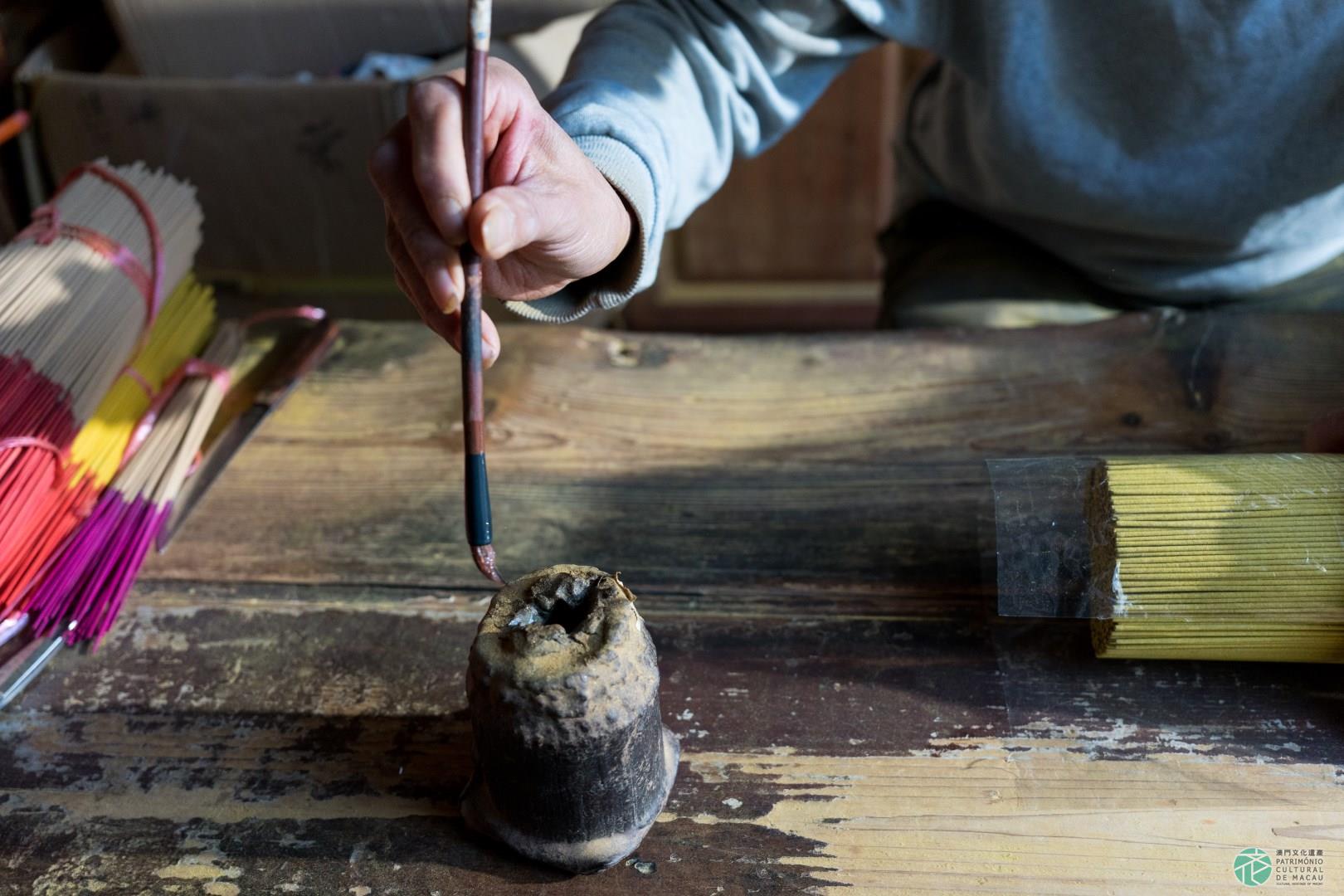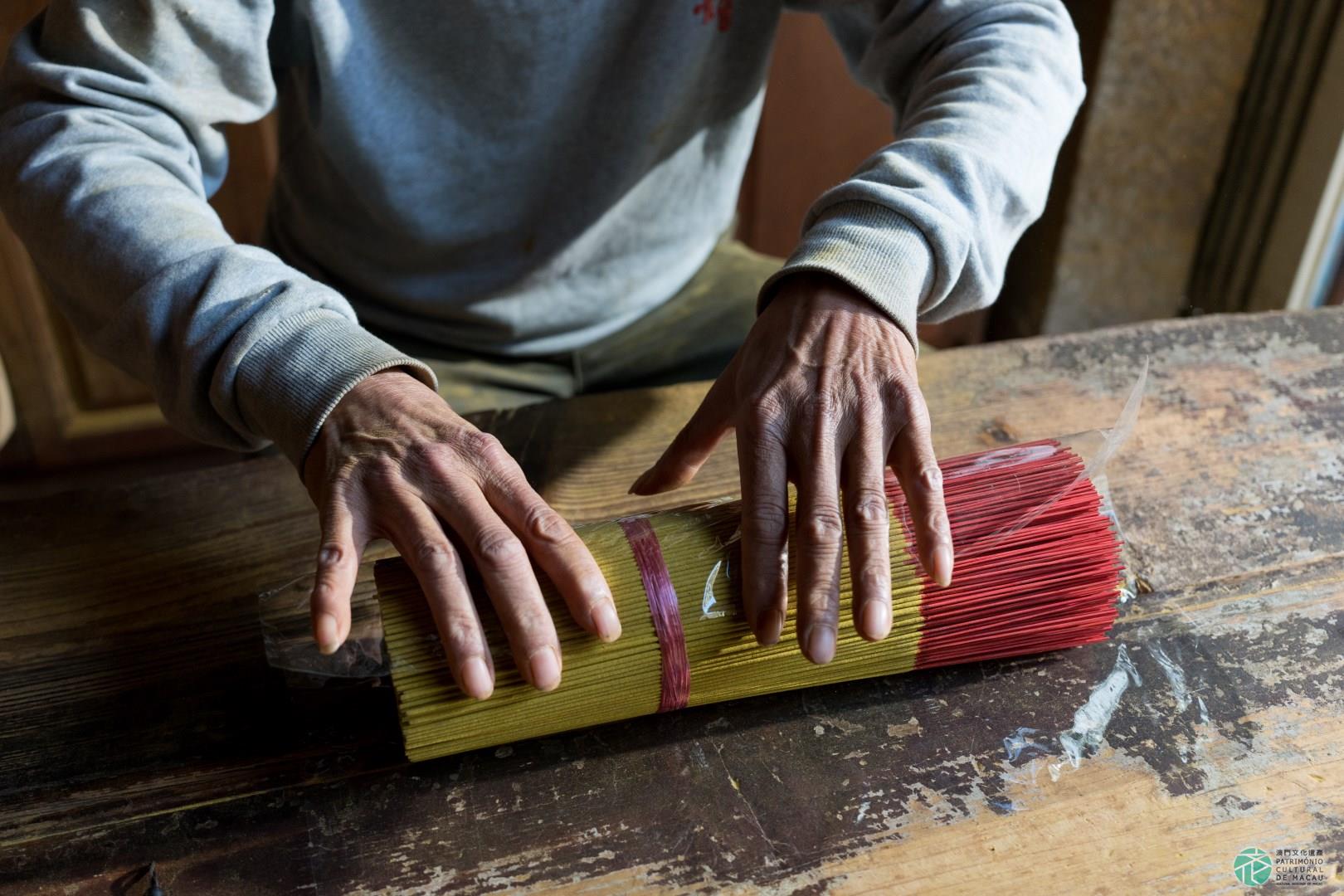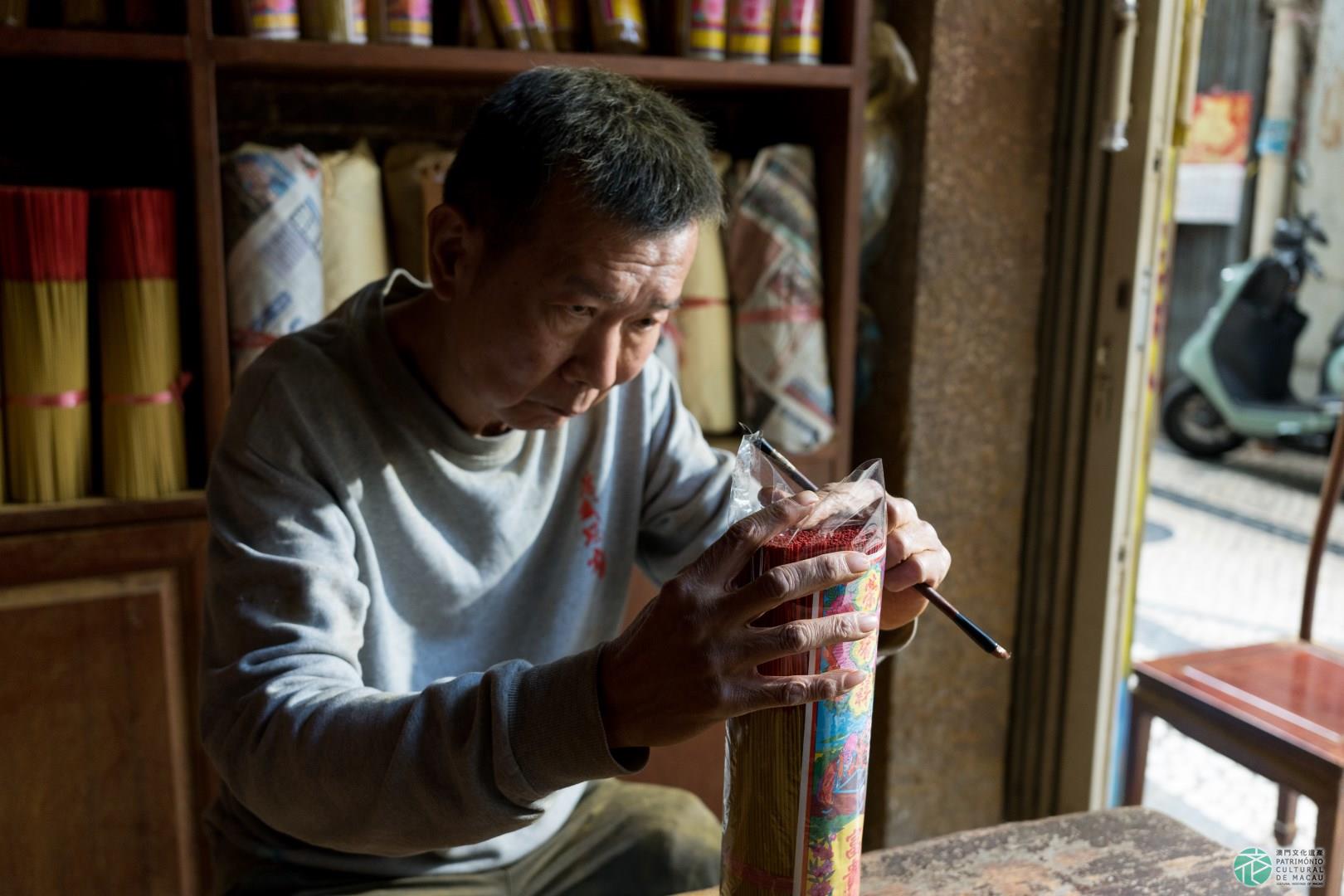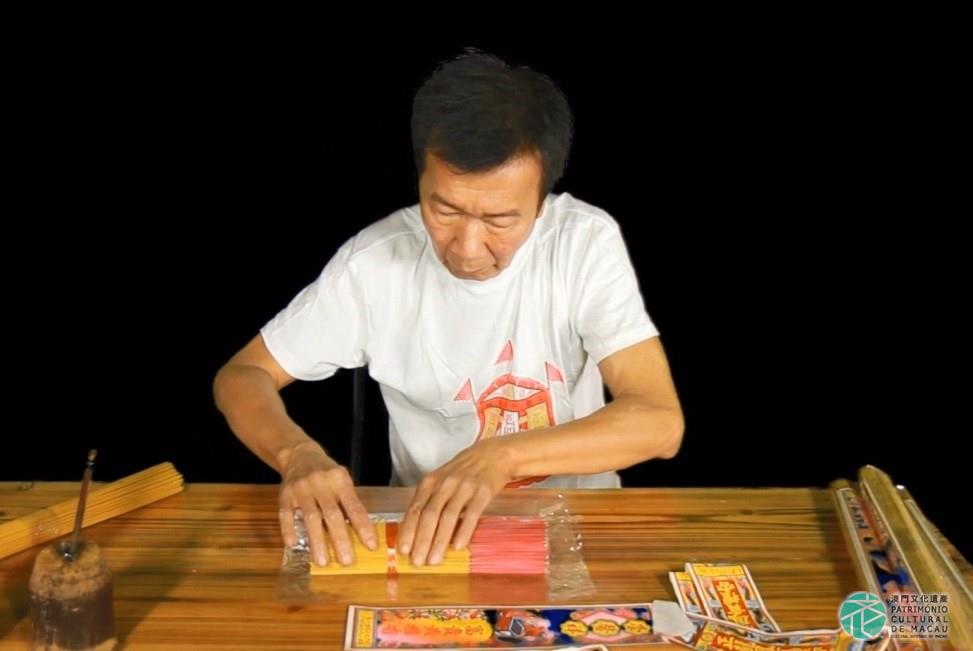Introduction:
Incense sticks are used for the worship of deities. It’s believed that the smoke released from the burning of incense sticks can reach the domain where deities reside, thereby being widely used in religious ceremonies and people’s daily rituals. As incense sticks became indispensable for traditional Chinese worship rituals, the respective manufacturing industry prospered. There are essentially two principal processes for the manufacturing of incense sticks in Macao – incense kneading (“Cuoxiang”) and incense coating (“Linxiang”). In the method of incense kneading, certain proportions of sawdust, spices and incense powder are mixed in a tray and the mixture is then poured into a basin and kneaded until it becomes sticky when heated. Thin bamboo sticks are then rolled, one by one, until they are fully coated. Afterwards, the coated incense sticks are left to dry in open air. The entire process is very technical and requires sophisticated skills and delicate craftsmanship, noting that each incense stick is manufactured individually, which makes the cost of this process relatively high. In the “Linxiang” method, the incense coating is achieved with a process in which a large bundle of bamboo sticks are soaked in water and then dipped in the mixture of incense powder three times before they are left to dry. This process is more efficient, but the quality of incense sticks produced is poorer when compared with incense kneading of the “Cuoxiang” method.
Conservation Status:
In the past, the incense stick manufacturing industry was one of Macao’s three principal manufacturing industries, together with the match and firecracker industries. With a history of more than one hundred years, these industries served as a key economic pillar of Macao. The production of incense sticks peaked during the 1950s and the 1970s, when there were more than 40 local incense factories. With the opening of the Chinese mainland market and due to a lack of space and a limited local workforce, this traditional industry declined, leaving only a few craftsmen today who are still dedicated to this handicraft.
Heritage Value:
The manufacture of incense sticks involves complex processes and sophisticated techniques, which is representative about the resilience of this traditional Chinese handicraft culture in Macao. The prosperity of the local incense industry was directly connected with the traditional customs and religious beliefs of local communities. As such, this craft is also of significant value for the study of past economic development of Macao, as well as the daily lives, traditions and culture of local residents.
